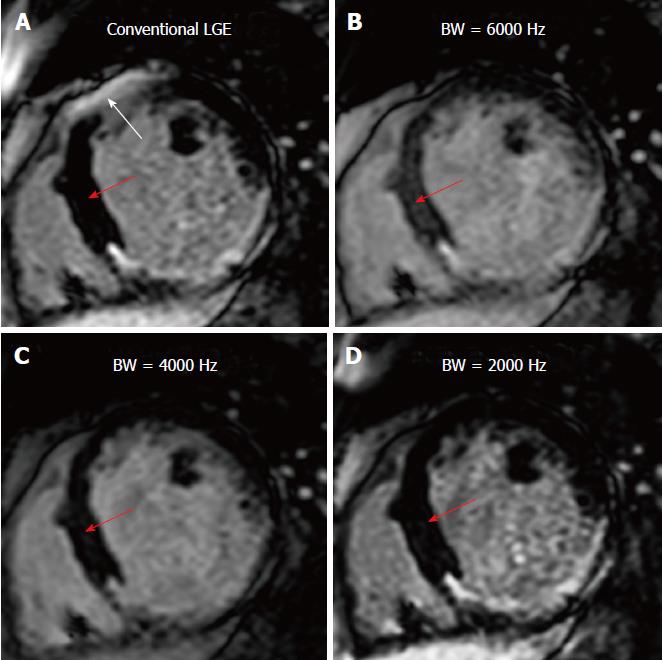Copyright
©The Author(s) 2018.
World J Radiol. Sep 28, 2018; 10(9): 100-107
Published online Sep 28, 2018. doi: 10.4329/wjr.v10.i9.100
Published online Sep 28, 2018. doi: 10.4329/wjr.v10.i9.100
Figure 3 Effect of the inversion recovery bandwidth on myocardial nulling.
A: Conventional late gadolinium enhancement showing a metal hyperintensity artifact (white arrow) mimicking an anterior scar, despite perfect myocardium nulling elsewhere (red arrow); B-D: Using wideband inversion recovery (IR) with different bandwidth (BW). Note that reducing the BW results in improved myocardial nulling (red arrows: the blood-myocardium contrast-to-noise ratio was 20.8, 13.2, 17.1, and 20.1 for conventional IR, and wideband IR with 6000 Hz, 4000 Hz, and 2000 Hz BW, respectively); however, too small BW (< 2000 Hz in this case) results in reappearance of the hyperintensity artifact, similar to that shown in (A).
- Citation: Ibrahim ESH, Runge M, Stojanovska J, Agarwal P, Ghadimi-Mahani M, Attili A, Chenevert T, den Harder C, Bogun F. Optimized cardiac magnetic resonance imaging inversion recovery sequence for metal artifact reduction and accurate myocardial scar assessment in patients with cardiac implantable electronic devices. World J Radiol 2018; 10(9): 100-107
- URL: https://www.wjgnet.com/1949-8470/full/v10/i9/100.htm
- DOI: https://dx.doi.org/10.4329/wjr.v10.i9.100









